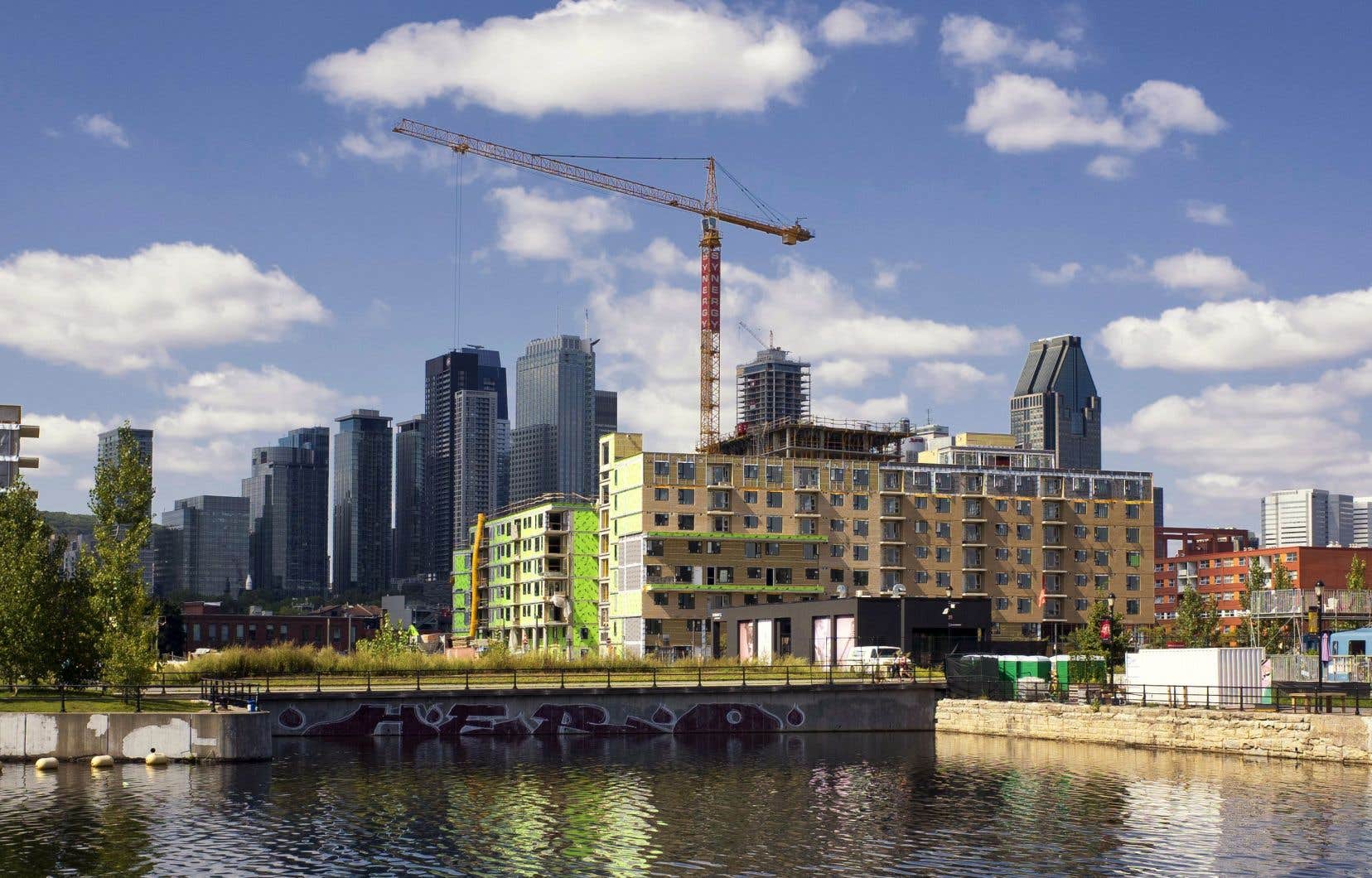The Bridge-Bonaventure sector could accommodate up to 15,000 housing units, estimates the Chamber of Commerce of Metropolitan Montreal (CCMM), which advocates a higher density than that initially planned by the City of Montreal.
In a report published Friday, a working group set up by the CCMM puts forward several proposals to “create conditions conducive to accelerated development” of the sector.
This working group, which brings together representatives of the Fonds de solidarité FTQ, Fondaction, Mouvement Desjardins and the Urban Development Institute of Quebec, suggests aiming for a minimum density threshold of 400 housing units per hectare for the Bridge sector. -Bonaventure, which is equivalent to a total of 15,000 housing units.
This figure is much higher than that of 7,600 mentioned in June 2023 by the administration of Valérie Plante. Michel Leblanc, president and CEO of the CCMM, points out, however, that the working group’s proposal includes land in the Wellington Basin held by the Canada Lands Company, which plans to create a new neighborhood of 2,800 housing units. It also exceeds the number of housing units put forward by real estate developers who own land on the Bridge-Bonaventure site, including Devimco, Groupe Mach, Broccolini and COPRIM. During the consultations held by the Office de consultation publique de Montréal in June 2023, they mentioned a target of 9,500 housing units.
In an interview, Mr. Leblanc mentions the housing crisis and the fight against urban sprawl to justify greater densification of the sector. But other factors come into play, he says. “The costs of infrastructure and decontamination are high. So, if we want the economic model to hold, the objective of 15,000 housing units is preferable. » According to him, if the permitted density is sufficient, developers are willing to comply with the Regulation for a mixed metropolis, which imposes requirements in terms of social and affordable housing.
Michel Leblanc is aware that the construction of tall buildings can harm the social acceptability of construction projects. “Under no circumstances should it be a wall of residential towers,” he said. As this area will become the “gateway” to the city center, he considers it essential to take care of its architectural signature.
Expensive infrastructure
To successfully accommodate so many new residents and limit automobile traffic, public transportation services will be required. In this regard, the CCMM emphasizes the importance of planning two Réseau express métropolitain stations in the sector, namely the Bernard-Landry and Bridge-Wellington stations, the completion of which has not yet been confirmed.
However, there remains a major obstacle to overcome before building in the Bridge-Bonaventure sector, believes Mr. Leblanc, namely the financing of the public infrastructure that will be required, the costs of which are estimated at $440 million. Considering that the City does not have the capacity to cover this bill alone, the working group suggests the creation of a non-profit company, separate from the City and the governments, which could take out loans to finance this work. in exchange for a share of the tax revenues generated by the exploitation of the sector.
Such a formula was mentioned in the discussions surrounding the Namur-Hippodrome district project, recalls Michel Leblanc.
Mayor Valérie Plante must also participate, on Friday, in an announcement concerning the Namur-Hippodrome site in the company of Sean Fraser, federal Minister of Housing, Infrastructure and Communities, and France-Élaine Duranceau, minister responsible for Housing. Earlier in the morning, the two ministers as well as Mayor Plante will participate in the Strategic Forum on major projects, organized by the CCMM.
